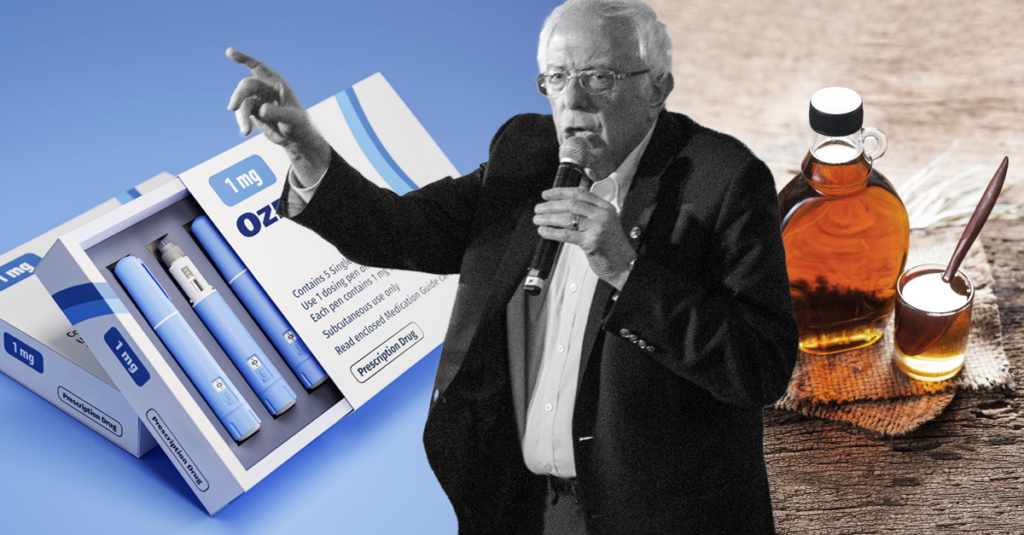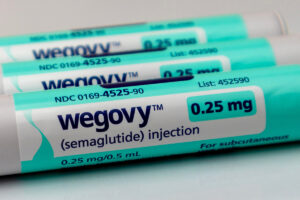Editor’s note: This blog was published by LinkedIn on April 22, 2024.
In health care, the term “value” gets lobbed about quite loosely. It is easy to forget that centuries of economic thought have gone into rigorously examining how worth is determined in a marketplace. Unfortunately, Congress conveniently ignores these economic lessons — with a little help from Ivy League researchers.
The latest grenade came from Bernie Sanders. Last month, the self-avowed “democratic socialist” demanded that Novo Nordisk lower its list price of Ozempic, citing Harvard University and Yale University research suggesting weight-loss drugs could be profitably sold for less than $5 per month.
Never mind that virtually no one pays list price for drugs anymore, and the Harvard and Yale authors didn’t account for the decades of R&D to demonstrate the drugs are safe and effective. The researchers also ignored the costs of meeting quality-assurance regulatory standards. As a patient with diabetes who requires insulin to survive, I appreciate the efforts of Eli Lilly and Company and Novo Nordisk to ensure safe supplies.
This view made sense a few hundred years ago. Early in the 19th century, classical economists developed a notion of value based on the effort that went into making a product. That is, value is based on the labor that goes into making it—plus some uniform rate of profit. Put another way, price is determined based on the costs of production. Karl Marx would later extend this labor theory of value to indict mass exploitation of workers.
Part of the problem with the labor theory of value is that it couldn’t explain prices of unique goods. Political economist David Ricardo, for example, noted it didn’t explain the prices of goods like paintings, wines, and rare coins. Neoclassical economists like Alfred Marshall eventually determined value derived not from production, but from exchange. Market forces — specifically, supply and demand —determine price. It explained why diamonds, in short supply, cost more than water.
But when it comes to health care, Congress conveniently ignores this lesson — often with help from academia. In 1979, Harvard researchers published an influential article arguing that health care markets were noncompetitive. Rather than trying to inject competition into the market, however, they argued that Centers for Medicare & Medicaid Services should set the Medicare price of every medical procedure by measuring the inputs.
This meant, for example, that a surgeon would be reimbursed depending on the “skin to skin” time — i.e, how long it takes to from surgical incision to final suture.
Congress was so enamored with this approach that they created a Physician Payment Review Commission to advise on Medicare’s method of paying physicians. Thus was born the Medicare fee schedule that administers prices that is still in use today— largely based on the labor theory of value. Columbia researcher Miriam Laugesen has a fascinating book on how physicians game the system.
The notion that drug prices should be determined by the cost of their production is a similarly terrible idea. Should a Netflix membership be free because it only costs pennies to stream? Of course not, because the content costs a lot to create and we want to reward innovators who make good movies. (Although the Netflix subscription model makes a lot of sense in health care.)
And by Senator Sanders’ logic, shouldn’t we apply the labor theory of value to all products? Some time ago, the US Forest Service estimated the cost of producing maple syrup at 12 cents per ounce. Adjusted for inflation, producing syrup costs $0.31 today (based on the producer price index). Yet a standard, 12.5 oz bottle of maple syrup — made by Vermont’s largest syrup manufacturer, Spring Tree — costs about $10.00 in the supermarket. This is equivalent to almost $1.00 per ounce. Using Bernie math, a bottle of maple syrup should only cost $3.88.
Ironically, Senator Sanders is pushing maple syrup amid an obesity crisis. He wants to encourage low-income seniors to consume more syrup through the MAPLE Act. If so, I suggest he amend the bill to limit syrup prices to $3.88 per bottle.
Regulating prices based on cost of production is not the answer — and medical researchers supporting this strategy should know better. The right approach is to encourage therapeutic competitors, reimburse commensurate with health outcomes, and vigorously promote generics and biosimilars when patents expire.
Sign up for Schaeffer Center news



